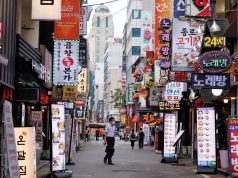Virus 2nd wave to deepen contraction
THE Philippine economy may face a deeper contraction if a second or third wave of coronavirus infections emerges, Bangko Sentral ng Pilipinas (BSP) Governor Benjamin E. Diokno said on Monday.
“In case there is a second wave that could mean ‘W-shaped’ recovery, it’s going to be much worse than the revised forecast,” Mr. Diokno said in an interview with ABS-CBN News Channel.
With a “W-shape,” the economy faces a bumpy ride where it would bounce back and sharply drop before a full recovery is seen.
In an effort to reopen the economy, lockdown restrictions were relaxed in Metro Manila and other parts of the country over the weekend. Many Filipinos went back to work, raising fears of a potential second wave of coronavirus disease 2019 (COVID-19) infections.
As of Monday, COVID-19 infections in the country rose by 205 to 12,718 while the death toll has reached 831 and recoveries totaled 2,729.
The Development Budget Coordination Committee (DBCC) last week said it projects gross domestic product (GDP) to contract by 2% to 3.4%, worse than the flat growth to -1% outlook it gave in April. The DBCC’s latest estimates assume a loss of about P2 trillion in gross value added or equivalent to 9.4% of nominal GDP, the central bank chief said.
Mr. Diokno said the latest DBCC estimates take into account the fiscal and monetary measures done by the national government and the central bank so far.
He said easing some lockdown restrictions bodes well for the economy’s eventual recovery.
“You have to consider that a big chunk of the country is now under modified to general quarantine and so that is a positive for the country, unless there is a deterioration in those hotspots,” Mr. Diokno said.
The first-quarter GDP already fell by 0.2%, the first contraction since the three percent drop seen in the fourth quarter of 1998. The economy is expected to slip into a recession with lockdown’s impact to be bigger in the second quarter.
DELAYED RECOVERY
“A W-shaped recovery may mean a higher level of annual economic contraction compared to a single resurgence that initially merited an economic lockdown in March,” UnionBank of the Philippines, Inc. Chief Economist Ruben Carlo O. Asuncion said in an e-mail.
“This would mean relegating economic activities again in the background to prevent the further spread of the virus, especially the non-essential business that have been reeling in the doldrums of non-activity,” he added.
Rizal Commercial Banking Corp. Chief Economist Michael L. Ricafort said more fiscal and stimulus measures will be needed in the case of a slower, W-shaped recovery.
“[T]his would require more stimulus measures such as financial aid for the most vulnerable sectors. This would also require greater monetary easing from the central bank,” he said.
Mr. Ricafort said hardest-hit industries could lose about 2% of their total income for every month of shutdown. Restrictions on business activities may have to be put in place again in the case of a second wave.
A second wave of infection could put more strain on the economy until 2023, according to Bank of the Philippine Islands Lead Economist Emilio S. Neri, Jr.
The DBCC projects economic recovery by 2021, with a growth outlook of 7.1% to 8.1% given the base effects from 2020.
“If we see a second wave of infections, we would see the recovery happen as late as 2023. Or maybe even later than that…because we saw from the first-quarter numbers, that just two weeks of lockdowns led to the slowest performance in consumption since the 1980s,” Mr. Neri said in an interview with ANC.
Mr. Neri said that government response should be proportionate to the gravity of the restrictions imposed in relation to the virus outbreak. He cited data from the IMF which showed that the country’s fiscal response is equivalent to about 3.4% of GDP.
“Stricter lockdown disrupts economy more. Vietnam lockdown was not too strict but early ban helped limit burden on government for support, same with China,” Mr. Neri said in a text message.
Mr. Diokno said a supplemental budget is needed to boost the economy and help people during the crisis.
“I think there is a need for supplemental budget, you cannot just rearrange the budget. There’s not enough room there (budget) for higher spending for this pandemic,” Mr. Diokno said.
To avoid the risks of a second wave of infections, analysts said spending should be ramped up for the healthcare sector.
“The healthcare aspect should be intensely stepped up. Implementation of health standards and restrictions should be amplified to its containment potential on all possible levels,” Mr. Asuncion said.
“Countries with weaker healthcare system should actually be more aggressive in their fiscal response, because this is necessary to offset the massive impact of the lockdowns,” Mr. Neri said.
Nomura Global Markets Research has said last week that they estimate an additional 1% of GDP should be allocated for healthcare spending, based on the estimated required resources of the World Health Organization and in the case when the country’s COVID-19 cases peaks at 30,000. — Luz Wendy T. Noble



